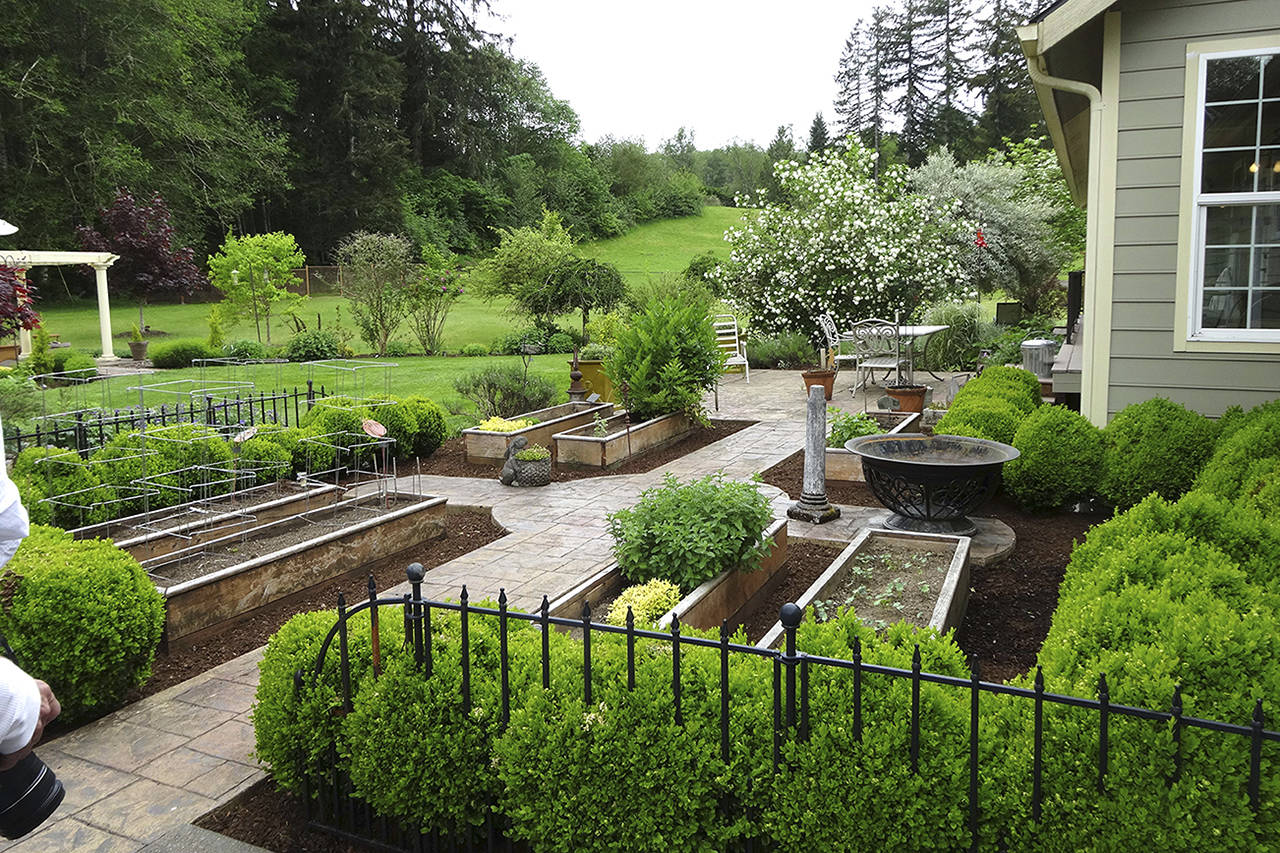By Kathy Eko
WSU Master Gardener
There are countless kinds of gardens.
Some have colorful perennials and shrubs, while others have structural plantings that create shady hideaways. There are formal gardens with simple geometry, which can be soothing and seem to never go out of style. There are plantings tucked into a corner of your yard and set among attractive shrubs, vines and perennials.
Don’t forget the informal garden, with a hodgepodge of flowers and grasses. There also are shade gardens, water-wise gardens and native gardens. All are wonderful spots that can give their owners much happiness.
Landscape designs will change depending on how the property will be used. You are the only person who can decide. Merely planting trees and shrubs is not “landscaping.” Specifically designing a landscape will give you an opportunity to create habitats for people, plants and wildlife.
Pacific Northwest gardeners are fortunate to be able to use a wide variety of plant materials to create landscapes that meet their needs.
You’ll want to create a “sustainable landscape.” This requires minimal inputs of labor, water, fertilizers and pesticides to survive. A sustainable landscape works toward a balance between resources used and resources gained.
When we moved into our current home, we had 2 acres of nothing but raw earth and blackberry vines. We had to decide what kind of a landscape we wanted immediately and in the future.
The first thing we needed was a site analysis, or landscaping plan. This is a useful first step in designing a new landscape, or renovating an existing landscape. A site analysis will tell you what conditions you have to work with. A thorough understanding of your site is important. What kind of soil do you have — is it sandy, rocky, full of clay? Where does the sun shine at different times of day? This will determine what kind of plants you choose and where you decide to plant them.
A sustainable landscape will allow native and other plants to prosper because they will be well suited to the existing light and soil conditions. A site analysis will help you to make the best use of available space in a sustainable manner.
As you work on your plan, ask yourself: Where is the best place for a play area for the kids? Where is the best area for a vegetable garden? Where is the best place for an adult entertaining area or a quiet secluded area? How your landscape will be used should be a determining factor in its design.
When planning my landscape, I tried to make sure there was year-round interest, especially for the area we could see from the house. For winter interest, we selected colorful shrubs and trees. Red-twig and yellow-twig dogwood shrubs are perfect. Another favorite for winter interest is witch hazel. In midwinter, they show us beautiful orange and yellow flowers. And, of course, we love forsythia with its bountiful small yellow flowers.
As you can see, to achieve your desired landscape effect, well-chosen plants are important. There are thousands of plants to choose from depending on your preference; but remember, try to choose the right plant for the right place. Before selecting your plants, consider your site analysis and determine whether any environmental conditions exist that may cause problems.
When completed, your landscape plan will ensure that all the work on the property will blend into the outcome. It may not happen in one season. In fact, landscaping is never “done.” There will always another tree, shrub or plant you can’t resist bringing home.
Much of this information came from “Sustainable Gardening: The Oregon-Washington Master Gardener Handbook” and the “Reader’s Digest Illustrated Guide to Gardening.” But there are libraries full of books on landscaping, so I have barely touched the subject here.
For more information, check out the Washington Native Plant Society website (www.wnps.org) and our local Master Gardener site (www.pnwmg.org).
Kathy Eko, who lives south of Elma, has been a WSU Master Gardener since 2010.
Upcoming Master Gardener Events
The annual Grays Harbor Home and Garden Show returns the weekend of May 20-21. Exhibitors, now is the time to reserve your display booth. Contact Robin Valentine at robinval@hotmail.com for more information.


